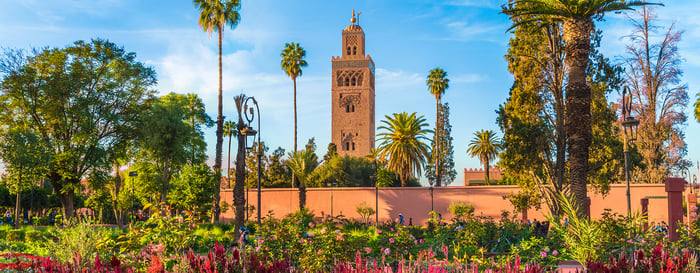Chai is a member of the Hmong hill tribe, an ethnic group which originated in southern China before spreading to Thailand, Myanmar, Vietnam and here, in Luang Prabang, northern Laos. The Hmong are a traditional people who typically practice self-sufficiency through farming and are passionate about preserving their shared cultural heritage.
Chai lives in a small Hmong village on the hilly outskirts of Luang Prabang, one of the most beautiful towns in South-East Asia, home to about 50,000 people. Nestled between verdant hills and the commanding Mekong River, it is embellished by myriad gold-encrusted Buddhist temples which blend nicely with the French colonial architecture of its old town. This unusual mix of architecture, combined with its intoxicatingly slow pace of life, has made Luang Prabang the country’s main tourist drawcard.
Most of the Hmong people farm their own food or buy it from the local market. This is a change from their days as a hunter-gatherer tribe, when the men would scour the dense forest around Luang Prabang looking for animals to shoot with their crossbows. Some Hmong men still hunt. Chai did so for many years in his youth. He still looks well capable of entering the forest and returning with a fine catch, which is quite remarkable given his age.
With a long, steady stride, and a fuller head of dark hair than I, Chai looks to be about 70 years old, perhaps even as young as 65. When the translator passes on my guess, Chai’s face breaks into a satisfied grin and he tells me his actual age. I am stunned.
At 89 years old, he is sat on a stool, bent over, using a broad knife and his own strength to craft an impressive wooden weapon from teak and bamboo. This task is tough work, as I soon learn, but it does not seem laborious to him. Chai is tackling it with zeal. All the while he is teaching me how to replicate his actions.
Chai earns extra income by inviting travellers like myself into his home to learn the intricacies of making traditional Hmong crossbows. His aim is to be able to pay for the schooling of his great-grandchildren. Chai tells me he is proud to be able to help them by using the craftsmanship he first learned as an 11-year-old boy.
Crossbows have been used by Hmong people for centuries and have had many purposes. Aside from their value as hunting tools, the weapons also helped Hmong people protect themselves against attack from other humans or from wild animals.
Crossbows also have spiritual significance. Bamboo arrows are used as decorations during Hmong funeral ceremonies, a custom which stretches back for many generations. In Hmong folklore it is said the deceased will be shepherded safely into the afterlife by these arrows, which they can wield against foes on their journey after death. Bamboo, itself, is revered by the Hmong, who believe it to be sacred. This is due to the plant’s key role in Hmong society, used as a material for crafting buildings, furniture, musical instruments, household items and weapons.
Chai uses smoked bamboo for the gently curved bow part of the weapon, which is designed to intersect at a 90-degree angle with the teak stock of the crossbow. He picks up a piece of bamboo he lopped from a nearby tree and places it on the ground in front of me.
With a large, broad-bladed knife, slightly smaller than a machete, I skim across the surface of the bamboo, shaving it into a smooth shape under Chai’s guidance. Earlier he had helped me carve a piece of teak wood into a sturdy stock, which is the long base of the crossbow which its user holds, akin to the barrel of a gun. I slice away at the bamboo bow until it fits tightly into the narrow notch I have carved into the stock, three-quarters of the way down its length.
With my weapon completed and assembled before me, Chai gives me a thumbs-up and gestures towards the bullseye target. He wants to engage me in a shooting contest. Typically, I would fancy my chances in any battle against an 89-year-old. But I’ve already witnessed Chai’s skills with a crossbow. Defeat appears inevitable.
I take hold of the crossbow, which is sturdy but surprisingly light, feeling almost like a toy. Chai tells me that the weapon’s weight was crucial because Hmong hunters had to carry them for many hours as they trekked kilometre after kilometre through rugged terrain. While the crossbow is certainly easy to carry, it is hard to imagine the pressure of relying on it as your main means of acquiring meat.
Taking tips on posture and grip, I steady myself to make the first shot. It goes somewhere. I’m being unspecific because none of us know quite where it has landed. All we can be sure of is that it missed the target by a great distance. Chai can’t stop laughing, which actually makes me feel more comfortable. I was worried that my woeful marksmanship may insult him. Instead he finds it comical and sets about trying to hone my technique.
Gradually, my arrows move closer and closer to the centre of the target. Finally, the bullseye is struck for the first time since Chai laid down his own crossbow. I decide to go out on a high and immediately announce the end of my crossbow career. Despite eight decades of wielding this weapon, Chai is not yet ready to follow me into retirement.
The Lightfoot Team can recommend the best hotels and experiences in Laos. Let us help you experience Laos with a tailor-made itinerary that suits you. Enquire now!
Classic Morocco
Marrakech Essaouira & The Coast The Atlas Mountains Erg Chebbi & the Moroccan Sahara Fez & the Imperial Cities Morocco
- Wander around the maze-like souks of Marrakech and Fez
- Spend a night stargazing in a camp in the heart of the desert
- See the varying landscapes from desert oases to the Atlas Mountains
- Visit famous film locations including Stars Wars and Game of Thrones
- Soak up the magical atmosphere of Djema El Fna square with its jugglers, fortune tellers, and snake charmers
Luxury Amazon Adventure
- Enjoy a private guided tour of Lima’s main sights and attractions
- Cruise through the Amazon aboard Delfin Amazon Cruises
- Observe an array of exotic birds and wildlife
- Go swimming, canoeing or kayaking in the Amazon and its tributaries
- Enjoy skiff excursions to meet the communities that live along the Amazon
Rockies Road Trip
Banff, Jasper & the Canadian Rockies Vancouver & Surrounding Areas
-
Enjoy views of the Canadian Rockies and Vancouver Island
-
Stroll along the shores of Long Beach before a bear-viewing cruise
-
Dare to cross the Cloudraker Skybridge and ride the PEAK 2 PEAK Gondola at Whistler
-
Traverse the Columbia Icefield on an all-terrain Ice Explorer
-
Relax in the Banff Upper Hot Springs while enjoying views of Mount Rundle








